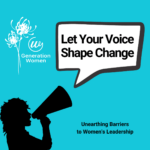Diversity and Inclusion is a hot news topic and under the microscope for many organisations. As with any of these things, it can become a case of ticking boxes rather than looking at what really needs to change – and that’s the culture of an organisation…and society!
We all have a moral duty to create an inclusive atmosphere in the workplace AND it makes for good business. Cultural reform is never easy (I should know having worked in it for over a decade), but by focusing on areas we can influence, change, and control we can transform our workplaces. Remember, the effect of exclusion can be devastating for employee happiness, confidence, and in turn productivity.
It is in a company’s best interest for each employee to have a sense of belonging so they can bring the best version of themselves to work every day. Diversity is essential; it will help your business thrive, but without inclusion it’s almost pointless. The stark truth is that the fear of being ‘different’ not only stifles productivity and performance, it changes the way people behave in the workplace. If you nail diversity and inclusion you will also ensure authenticity which can be the key to a team driving forward and outperforming. It’s all well and good having diversity and inclusion at the top of your agenda when hiring, and you may even have ongoing training on the subject. It can’t end there. It’s an ongoing process and awareness of exclusionary factors is just as important. With that in mind, what should you be looking for?
Biased Recruitment
The rise in diversity is related to the increasingly collaborative structure of modern organisations: the evidence is that companies that can effectively recruit and manage a diverse workforce have a clear competitive advantage. You will never have diversity without looking at how you recruit. How is the language you use excluding people? What about the imagery? When the photo’s on your website and marketing are all of young, white, able-bodied men, what exactly will encourage anyone that doesn’t fit the mould to apply? Your interview panel should be diverse. Your leadership team should role model diversity by hiring and promoting diverse candidates into those roles.
Performance Reviews
These can be an essential tool to help you create the kind of company culture that embraces diversity and inclusion in a real, practical and performance-driven way. Ensure that you have a standardised process and that any bias is impossible. Use measurable results and set targets that are consistent for everybody. The real key is to include diversity and inclusion in the review itself. It’s a useful way to assess what you are doing right and what you can improve on. Assess each employee on how they are promoting diversity. Are they making jokes that don’t fit in with your culture? Maybe they have made a real effort to include a new member of staff in activities and help them fit in? Now is the time to talk about it and make changes and praise positive activities.
Promotions
There is no point in having a diverse workforce if you aren’t keeping any of them, so actively encouraging a broad range of applicants for promotions will send out a clear message that you are willing to promote on merit. Ensure that any company training is available to a diverse range of employees and encourage broad participation. Mentorship programs are a key factor in making sure that everyone can advance. Employees with high potential should be offered mentors regardless of their age, race, sex, or other factors. If a company-sponsored mentorship program isn’t possible for your company, there are other ways of providing comparable opportunities. Encourage less-structured professional development opportunities like continuing education, women’s leadership, and other culturally-relevant interventions.
Withholding information
Not sharing information equally by leaving certain people out of the loop can cause resentment. Pay attention to what information you are sharing and who you are sharing it with. Obviously there will be times when sensitive information needs to be kept within a senior management team, but question your motives for withholding information. Is it really necessary? Take steps to actively increase transparency in your organisation. Pay transparency, for example, will go a long way to minimising any pay gaps.
Exclusive meetings
How inclusive meetings are your meetings? Meetings reflect the culture of an organisation, people being routinely left out will be noticed. Start by considering who’s invited. Who gets to speak and how often? Are you leaving out anyone whose input would be valuable? If your meetings are dominated by a few individuals, act to limit their input and encourage those who may seem less confident. Diversity and inclusion isn’t just about the make up of your work force. It is just as much about the diversity of ideas and decisions. Build in simple processes that give everyone a voice and input. Both morale and results will improve.
Prohibiting Challenge
Sometimes staff have things to say that you don’t want to hear. That’s life. Punishing those who speak up creates a culture of fear and exclusion that can take years to repair. Even in the face of criticism the employer who has a reputation as a listener will be more inclusive and more successful. It’s important to be aware that people in minority groups may not feel comfortable or confident to speak up – do not assume that because some do that all will.
In addition, not providing an avenue for employees to deal with issues by assuming they will just talk to their manager can cause a sense of exclusion that will spread. Having clear HR guidelines is great, but do ALL employees know what they are? Do team members feel comfortable enough to go above their direct manager if a concern arises? Having blind faith in any of your managers may come back to haunt you. Creating an environment where any employee feels that they have a voice could literally save your business.
Exclusive Management Behaviours
Empathy and emotional intelligence should be a key requirement from any of your managers. A manager without the ability to empathise shouldn’t be someone you should be employing. Too many times individuals with excellent results get to move ahead in their careers despite having the people skills of a house brick. Keep an eye on how team members react around your senior staff and tackle the lack of empathy head on before it spreads to create a culture of utter misery. It’s also important to take steps to unearth any unconscious bias (including your own). We all have biases, and if we don’t recognise them, we can be behaving in an exclusive way without even realising it.
Fear Culture
Creating a “fear culture” instead of a culture of possibility will make your attempts to create a diverse work place a waste of time. Micro-managing and authoritative management styles need to be nipped in the bud. If people don’t feel valued for their skills and experience, and instead are afraid to raise their heads, exclusion will be the unfortunate consequence. The behaviours that cause it can be subtle too. A manager can let it go unchecked without even thinking.
Everyone going for lunch and leaving one or two people behind? Ask why? Don’t let that sort of behaviour become the norm. Think about what sort of social events are held outside work or what team building events you hold. It can be difficult to please everyone but if you aren’t getting uptake from a few people on your planned trip to the pub then maybe you should re-evaluate? Or at least arrange an event where EVERYONE can attend.
Monitor Language
Ignoring inappropriate behaviour and language that targets a specific person or is dismissive of a team member based on their age , gender, sexuality or race is unacceptable and will exclude. Don’t tolerate it because it’s banter. How many of us have put up with a joke because we don’t want to seem like a killjoy. As a result people feel uncomfortable about being themselves. It doesn’t mean that you ignore individuality for the sake of inclusion, for example being ‘colour-blind’ or engaging in unnatural tokenism, bias and stereotyping. Have some sense and act with respect. Call out disrespect.
The key is to explore why employees are there in the first place. If you create a common and shared goal then gender, race, age or sexual preference becomes irrelevant. This is why diversity and inclusion needs to have a top down approach. If it doesn’t come from the very top it won’t permeate the entire culture of your business.
If you would like to learn more about Generation Women and our Diversity and Inclusion programmes click here or connect with me on LinkedIn.







